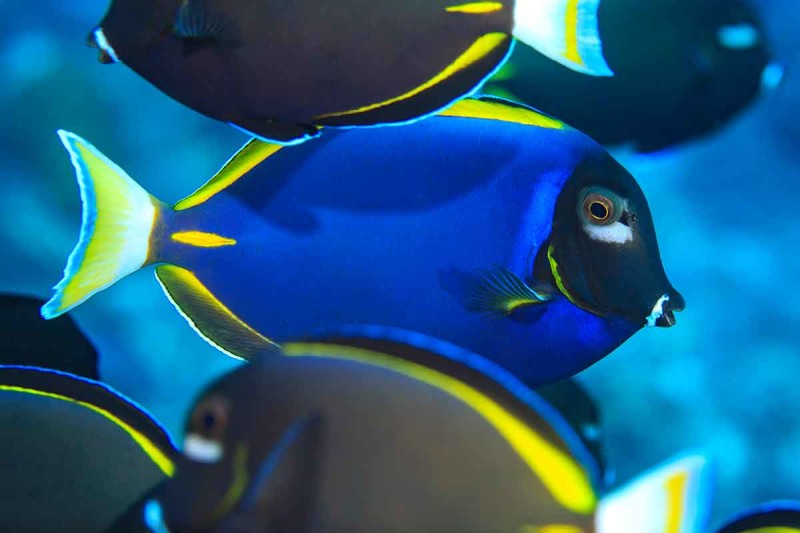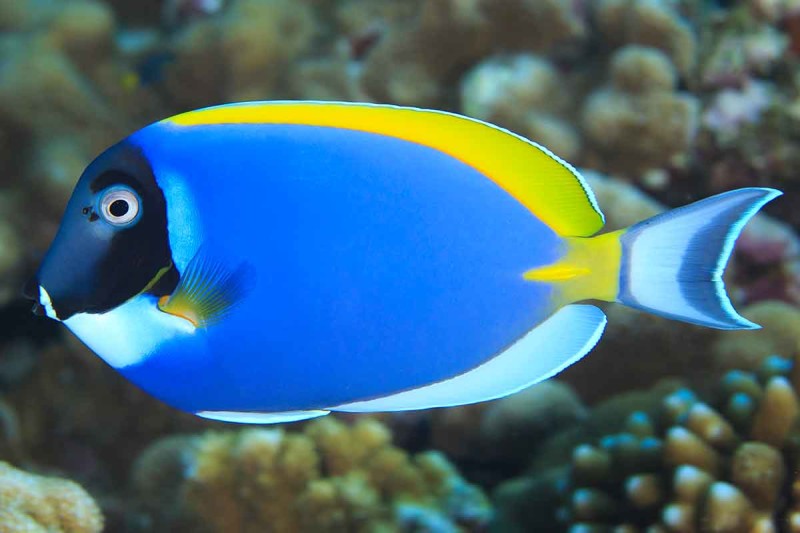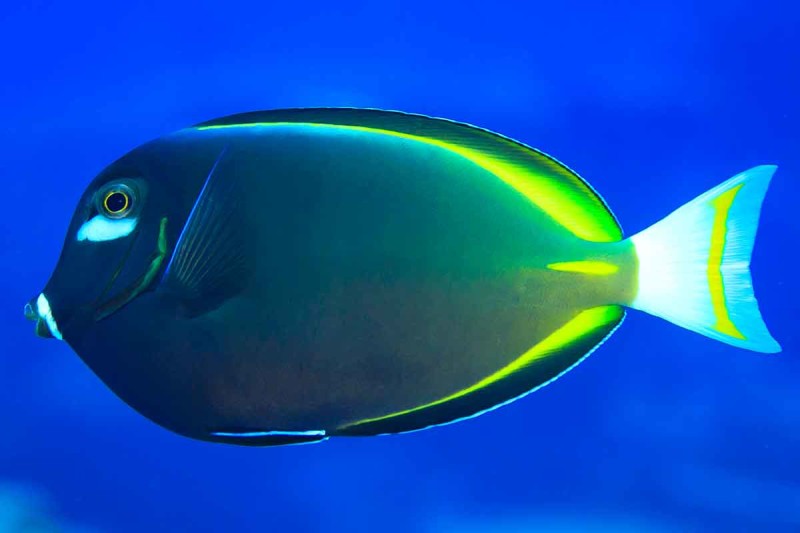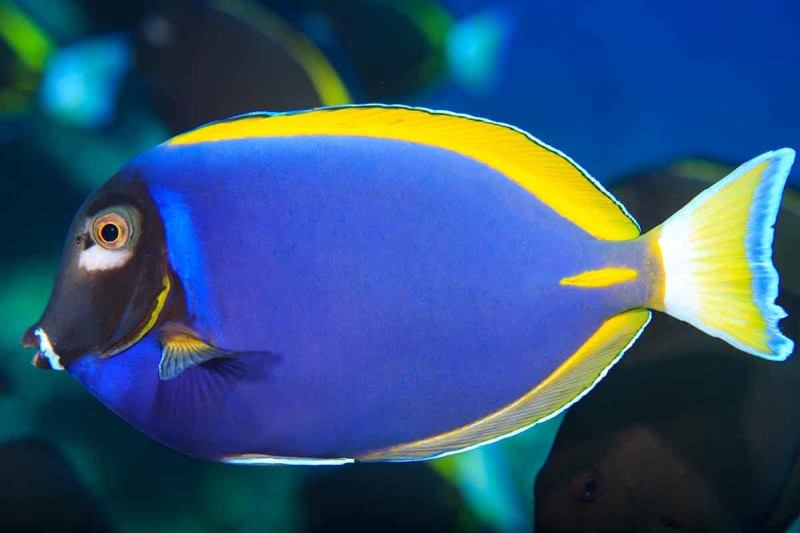
If the islands along the Indo-Pacific border, including Christmas Island and the Cocos (Keeling) Islands, had their own soundtrack it would be by Barry White. The powder blue x whitecheek tang hybrid is latest specimens to take the stage at this hybrid hotspot melting pot.
This little hotspot we have been writing about for years is known for its aberrant species and unique hybrids that include some of our favorites like the ‘Cocopeel‘ and strange Scopas tang hybrid. There is a now a new report detailing how the Acanthurus leucosternon (powder blue) and Acanthurus nigricans (whitecheek) came to intermix.

As you can imagine, defining when one ocean stops and another begins is difficult at best as water flows across any line on a map. But at one point the oceans were lower and were separated by land. Before the split, the powder blue and whitecheek were part of the same species. After being separated, they began evolving differently and the differences became more distinct over time.
Now that the two oceans are connected, these species are turning back to their old roots and actively seeking each other out as mates making for the A. leucosternon x A. nigricans hybrid.
In a new report in Science Direct Joseph Di Battista of Curtin University in Western Australia studied these two species in the area. Noting how the reefs around these islands are hotbeds of interspecies sex, Di Battista and his colleagues said it when looking at the DNA, it was impossible to find a pure-bred specimen of either in the area — all of them were genetic hybrids.

Acanthurus leucosternon normally from the Indian Ocean
“These guys are actually choosing to mate with each other, even though they’re different species,” Di Battista says. “You can get hybrids in the ocean when one fish species is more abundant than another. The rarer fish goes for the next best thing he can find – a different species but one that he’s closely related to.”

Acanthurus nigricans normally from the Pacific Ocean
In fact, many of the fish also had a mix of color, marks and features of both parents. and features from the two parent species.
Although many thought fish hybrids in the oceans were pretty rare, scientists are finding this overlapping of species more common and particularily around the Christmas and Cocos Islands.

An A. leucosternon x A. nigricans hybrid
Another factor that might just increase the number of hybrids we see? As climate change is driving fish into new territories the pump is primed for new hybrids to start popping up in unexpected places.
“As the ranges of fish begin to shift, they’re going to come in contact with new species that they may be closely related to but with which they’ve never had contact before,” says Di Battista. “I don’t know if it will be a good thing or a bad thing, but the mating opportunity will be there.”
[via New Scientist, photo credit: Tane Sinclair-Taylor]
Readers also viewed:
- Gem tang hybrid could be the rarest surgeonfish ever
- Hybrid blueface angelfish appears at Vessel 1997 in Japan
- Another look at the captive-bred emperor x annularis angelfish hybrid
- Destination Tokyo, the final frontier
- Balinese faux gold: Captive bred hybrid Goldflake Angelfish
- Socotra is a convergence of hybrid reef fish
- Second ever hybrid gem tang collected in Mauritius
- Hybrid spawning of Rhinopias captured on video
Continue reading...









